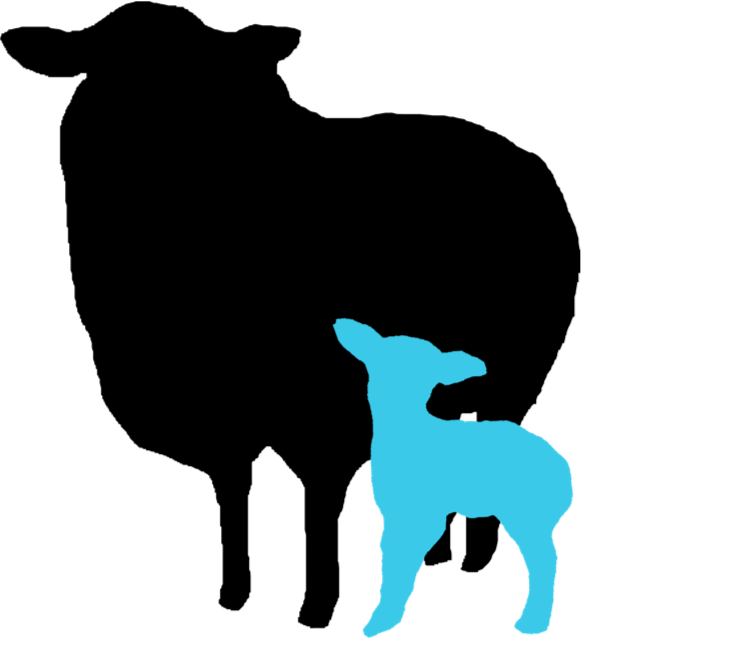My Research
__________________________________________________________________________________________________
The role of lambs, time and space in persistence of Dichelobacter nodosus, the causal agent of footrot
Lameness in sheep is detrimental to health and welfare and has a major impact on the economics of the sheep industry. The majority (>90%) of lameness in Great Britain is caused by footrot, an infectious bacterial disease caused by Dichelobacter nodosus. Many risk factors for lameness in ewes have been identified, leading to development of control practices that can be recommended to farmers to reduce lameness prevalence in their flocks. The objectives of my PhD project are to identify risk factors for lameness in lambs, and to investigate transmission dynamics of the spread of footrot between ewes and lambs. Information from these analyses will lead to design and conduction of a longitudinal observational study that records spatial location, close contact and occurrence of lameness in lambs and ewes.
Supervisors: Professor Laura Green (Birmingham University), Professor Matt Keeling (Warwick University), Dr Lis King (AHDB)
Funding: BBSRC MIBTP CASE Studentship 2017-2021, industrial sponsor: Agricultural and Horticultural Development Board.
__________________________________________________________________________________________________
Research Outputs:
Publications:
Lewis, KE, Green, MJ, Witt, J and Green, Multiple model triangulation to identify factors associated with lameness in British sheep flocks, Preventive Veterinary Medicine, 105395
Lewis KE and Green LE, 2020, Management Practices Associated With Prevalence of Lameness in Lambs in 2012–2013 in 1,271 English Sheep Flocks, Frontiers in Veterinary Science, 7:519601, doi: 10.3389/fvets.2020.519601
Monaghan, EM, Prosser, NS, Witt, J, Lewis, KE, Nabb, E, Keeling, MJ, Purdy, KJ and Green, LE, Impact of strain variation of Dichelobacter nodosus on disease severity and presence in sheep flocks in England, Frontiers in Veterinary Science, doi: 10.3389/fvets.2021.713927
Posters and Talks:
- 2018 MIBTP Poster Presentation session: Identifying risk factors for prevalence of lamb lameness in a random sample of English sheep flocks over one year (2012-2013)
- 22.02.2019 Ruminant Health Meeting talk, Nottingham University- 'Multinomial models indicate a non linear relationship between prevalence of lameness in lambs and treatment practices'
- 08.01.2020 - 10.01.2010: Social Network Analysis workshop, Max Planck Institute of Animal Behaviour, "Investigating the role of contact between ewes and their lambs in transmission of footrot in a flock of sheep in England" - poster presentation and talk
__________________________________________________________________________________________________
Previous projects:
- MIBTP placement (January - March 2018), University of Leicester: The role of the copL, a novel lipoprotein involved in copper hyper-resistance, in Staphylococcus aureus and Listeria monocytogenes. Used epidemiological analysis to determine the prevalence of copXL homologues across L. monocytogenes using genome sequence databases, and used laboratory analysis to assess the phenotype of a markerless copL mutant produced from the Nebraska Transposon Mutant Library in order to confirm the phenotypes involved with the copL::kan mutant strain.
- MSc (2016), Royal Veterinary College: Creating a predicted typology for cattle herds based on routine, pre-collected data using three sample areas of the UK, working with the Animal and Plant Health Agency. The project involved analysing the variance between herds and using a cluster analysis to identify homogenous groups of cattle.
- BSc (2015), Aberystwyth University: The effect of a combination joint supplement on the stride parameters of horses, sponsored by NAF. Presented at the Altech Hartpury Student Conference 2015, as a poster at the Horses Inside Out 2016 Conference and referenced in Horse and Hound magazine.
__________________________________________________________________________________________________

